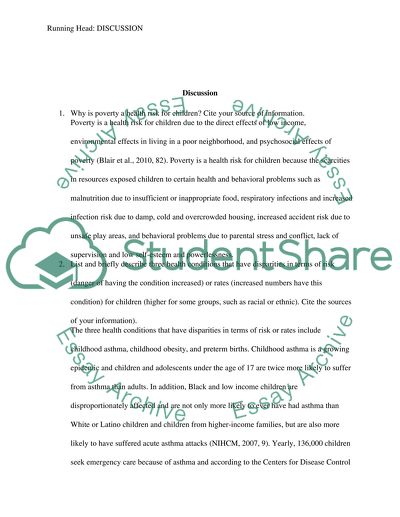Cite this document
(“Why is Poverty a Health Risk for Children Essay”, n.d.)
Retrieved from https://studentshare.org/nursing/1445240-dicussion
Retrieved from https://studentshare.org/nursing/1445240-dicussion
(Why Is Poverty a Health Risk for Children Essay)
https://studentshare.org/nursing/1445240-dicussion.
https://studentshare.org/nursing/1445240-dicussion.
“Why Is Poverty a Health Risk for Children Essay”, n.d. https://studentshare.org/nursing/1445240-dicussion.


